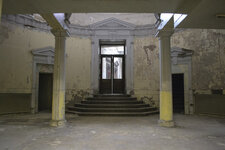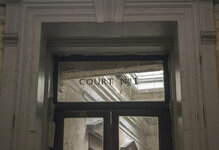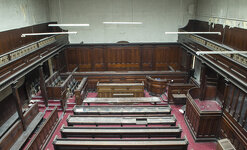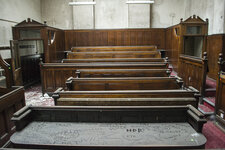Met up with an old friend in sheffield who is new to exploring and wanted to get involved,
picked a few off the list and went for it. first stop was the courts and it did not dissapoint.
Some history
Sheffield Old Town Hall stands on Waingate in central Sheffield, England, opposite Castle Market.
The building was commissioned to replace Sheffield's first town hall, which had opened in 1700 to a design by William Renny. This first structure stood by the parish church, on a site with little prospect for extension.
The Old Town Hall was built in 1807–8 by Charles Watson, and was designed to house not only the Town Trustees but also the Petty and Quarter Sessions. The initial building was a five-bay structure fronting Castle Street, but it was extended in 1833 and again in 1866 by William Flockton (1804–1864) of Sheffield and his partner for the project, Abbott; the most prominent feature was the new central clock tower over a new main entrance that reoriented the building to Waingate. At the same time, the building's courtrooms were linked by underground passages to the neighbouring Sheffield Police Offices.
Waingate in 1857: the Old Town Hall with its first clock tower on the left
The first Town Council was elected in 1843 and took over the lease of the Town Trustees' hall in 1866. The following year, the building was extensively renovated, with a clock tower designed by Flockton & Abbott being added.
By the 1890s, the building had again become too small, and the current Sheffield Town Hall was built further south. The Old Town Hall was again extended in 1896–97, by the renamed Flockton, Gibbs & Flockton, and became Sheffield Crown Court and Sheffield High Court. In the 1990s, these courts moved to new premises, and since at least 1997 to present, the building remains disused.
In 2007, it was named by the Victorian Society as one of their top ten buildings most at risk.
Not the best quality but heres some photos,













Thanks for looking...
picked a few off the list and went for it. first stop was the courts and it did not dissapoint.
Some history
Sheffield Old Town Hall stands on Waingate in central Sheffield, England, opposite Castle Market.
The building was commissioned to replace Sheffield's first town hall, which had opened in 1700 to a design by William Renny. This first structure stood by the parish church, on a site with little prospect for extension.
The Old Town Hall was built in 1807–8 by Charles Watson, and was designed to house not only the Town Trustees but also the Petty and Quarter Sessions. The initial building was a five-bay structure fronting Castle Street, but it was extended in 1833 and again in 1866 by William Flockton (1804–1864) of Sheffield and his partner for the project, Abbott; the most prominent feature was the new central clock tower over a new main entrance that reoriented the building to Waingate. At the same time, the building's courtrooms were linked by underground passages to the neighbouring Sheffield Police Offices.
Waingate in 1857: the Old Town Hall with its first clock tower on the left
The first Town Council was elected in 1843 and took over the lease of the Town Trustees' hall in 1866. The following year, the building was extensively renovated, with a clock tower designed by Flockton & Abbott being added.
By the 1890s, the building had again become too small, and the current Sheffield Town Hall was built further south. The Old Town Hall was again extended in 1896–97, by the renamed Flockton, Gibbs & Flockton, and became Sheffield Crown Court and Sheffield High Court. In the 1990s, these courts moved to new premises, and since at least 1997 to present, the building remains disused.
In 2007, it was named by the Victorian Society as one of their top ten buildings most at risk.
Not the best quality but heres some photos,
Thanks for looking...






